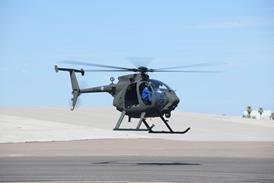Kevin O'Toole/LONDON
If the latest round of year-end order announcements from Airbus and Boeing seemed to lack some of the high drama of previous years, perhaps it comes as recognition that there may be some tougher times ahead.
Quite apart from the internal restructuring issues that pre-occupy both manufacturers, the airliner market itself appears ready to slow down, not helped by the unfolding crisis in Asia Pacific, once the backbone of widebody orders.
There were already signs that the order intake has begun to level out in 1997 falling a little short of the 1996 total, when Boeing's tally was swelled by the inclusion of its US mega-deals. After relatively low cancellations, the net result is another year of orders close to the 1,000 mark. That does not quite compare with the heady days of the late 1980s when airlines bid the market up to an order peak of nearly 1,500 aircraft, but the whole industry has reason to welcome less drama this time around. The order drought and drastic cancellations which followed that frenzy, reduced the market to only one net new order at its depth in 1993.
While there is not yet a serious downturn on the horizon, the strong betting is that the market will struggle to match the past couple of years and that, in retrospect, it may be that 1996/7 proves to have been the peak for this latest airline buying cycle.
Chris Avery, aerospace analyst at Banque Paribas, argues that there are few major deals in prospect after the latest re-ordering spate, pointing out that, over the last two years, the top ten customers have accounted for more than half of the world's orders for aircraft. Without such deals, it is unlikely that the manufacturers will be able to keep the boom rolling.
Certainly, in North America, the big deals have already been done. Further business will eventually flow through from Boeing's massive rolling deals with American Airlines, Continental Airlines and Delta Air Lines, as well as from the US Airways pact with Airbus, but not until some of the existing new capacity is absorbed.
There are better hopes of fresh ordering from Europe. British Airways is shortly to kick off a major narrowbody contest and Air France's new chairman is urging the need for another serious fleet expansion, but has first to steer the carrier through its search for private capital.
The bigger issue for 1998 is what now happens in Asia Pacific. Around of deferrals and cancellations is clearly on the cards as traffic growth weakens. Korean Airlines has been told to rein back on orders as part of the whole country's austerity drive, while its main rival Asiana faces an uncertain future. Philippine Airlines has already discussed Boeing 747 cancellations and others are wavering as load factors sink, including Cathay Pacific Airways and Thai Airways.
On paper, the number of international aircraft at risk looks relatively manageable. Asia-Pacific carriers account for just over 280 aircraft orders, excluding Japan and mainland China. That equates to a little over 10% of the backlog for Boeing and Airbus. More worrying is the level of expensive widebodies in the mix.
Boeing is arguably worse affected, with around 48 747-400s and another 93 777s - a worrying 30-35%of the backlog for those types. By contrast, the Airbus backlog includes only 40 outstanding A330/A340 orders in the region, or around 17%. Neither is Airbus particularly exposed on the new A340-500/600 models - current launch customers, with the exception of EVA Airways, are largely outside the region, including Lufthansa, Swissair and Virgin Atlantic. Airbus, always keen to highlight the virtue of its backlog, adds that only the Virgin order is counted in the latest order figures.
Airbus should be cheered by its 1997 result, arguably the best-ever underlying performance in the consortium's history. The net order tally of 438 aircraft is 20 higher than in the 1989 boom year, but, perhaps more importantly, represents 45% of new business in terms of units and a little over 40% of the dollar value.
The consortium did better than that three years ago when it drew level with Boeing, but that was at the bottom of the cycle when none of the figures was exactly impressive. The Airbus average over the previous ten years has been closer to one-quarter of net orders.
The usual warnings apply about taking a single year's results in isolation. Airbus also again complains that its figures exclude "commitments", which it claims that Boeing sometimes counts. The consortium argues that, in 1997, it had another 211 of these commitments - essentially deals which have not gone as far as enforceable contracts with down payments.
A look at the world backlog gives a cleaner picture of historic share and on that basis, Airbus has crept up above one-third. The consortium might not quite meet its target of a 50% share by the turn of the century, but it seems to be getting closer.

Source: Flight International























